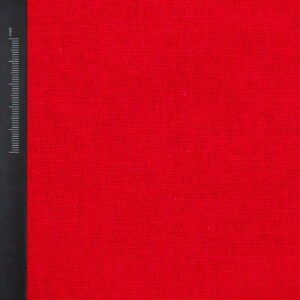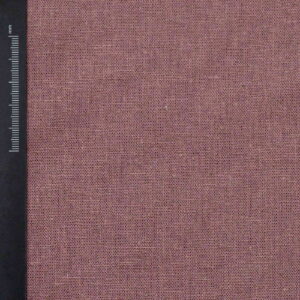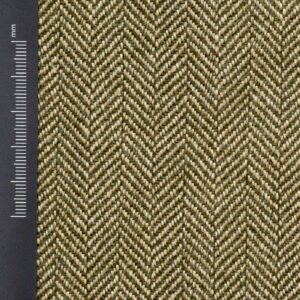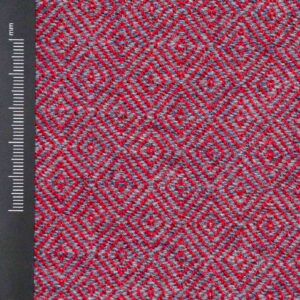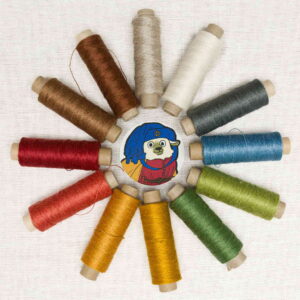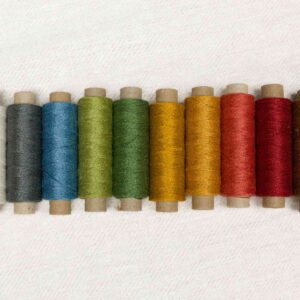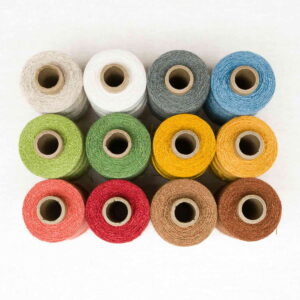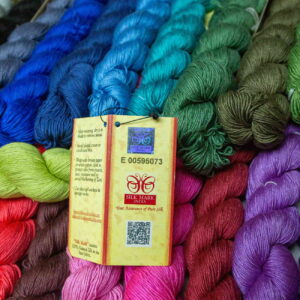Thread selection, whether for a historical or contemporary project, plays a crucial role in the aesthetic, functional, and durability aspects of the finished product. The thread thickness, expressed through various measurement systems such as Nm or Tex, provides essential information about the thickness of a given thread, aiding in the selection of the most suitable thread for a specific application. Read how to thread thickness designation
What is the metric number describing the thickness of the thread?
Nm or metric number is a unit used to express the linear density of yarn as the number of meters per gram. This measurement allows designers to understand the length achievable from a specific mass of yarn.
For example, yarn with a metric number of 20 Nm means that there are 20 meters of yarn in two strands within one gram.
Lower Nm values indicate thicker yarn, suitable for heavier fabrics, as well as for embroidery, lace making, crocheting, and even knitting. On the other hand, higher Nm values suggest finer yarn suitable for sewing delicate fabrics or very fine embroideries.
In the case of the metric system, the formula applies:

In the metric system, you may encounter notation (as in the case of our silk yarn Claudia) like 20/2. What does the second number represent? It denotes the number of individual threads twisted into one yarn.
So, Claudia, with a size of 20/2, is twisted from two threads, and in one gram, there are 20 meters of a single thread, resulting in 10 meters of finished yarn in one gram.
On the other hand, Flavia, described as 26/6, is twisted from six threads, and additionally, in one gram of the yarn, only 26 meters of a single thread fit, which means 4.4 meters of finished yarn. Flavia is therefore much thicker than Claudia.
What is Tex?
The Tex system is another widely used measure of linear density, expressing the mass of 1000 meters of a single yarn in grams. Tex value is calculated by dividing the mass in grams by the length in meters and then multiplying by 1000. The formula for Tex can be presented as follows:

This system provides information about the thickness or fineness of yarn, where lower Tex values indicate finer yarn, and higher Tex values indicate thicker yarn (in contrast to the metric system). However, the notation is crucial, representing the number of individual threads in the yarn. For instance, Rapax wool yarn, which has 400 meters in a 100-gram skein, has a weight of 250 g/km.
Since it consists of two threads, the correct Tex notation in this case is 125 x 2.
On the other hand, Flavia, with 220 meters in a 50-gram skein (440 meters in 100g), has a weight of 227 g/km. However, Flavia is composed of 6 individual threads, and the correct Tex notation is 38 x 6.”
Converting Nm to Tex or Tex to Nm
The relationship between Tex and Nm is inversely proportional, making conversion straightforward for those familiar with both systems.
This relationship stems from the definitions of these units. Nm is the reciprocal of Tex, meaning that as Tex increases, Nm decreases, and vice versa. In practice, if you know the Tex value of a yarn, you can easily convert it to Nm and vice versa using one of the formulas.

When converting one measure to another, it is still important to pay attention to the number of individual threads in the yarn. This is because you can substitute both values into the formula.
For example, Claudia silk yarn has a thickness of Nm 20/2, which is 10 m/g.
In the formula, you can substitute both values of 20 and 10. In the first case, you get the mass of a single thread – 50 g/km, so you write Tex as 50×2. When substituting the length of a single thread, which is 10, into the formula, you get the value of 100. Before writing it down, you need to divide the result by the number of threads in the yarn, in this case, by 2. This also gives you the notation 50tex x 2 (both forms of notation, with tex before the measure and tex within the number, are correct).



